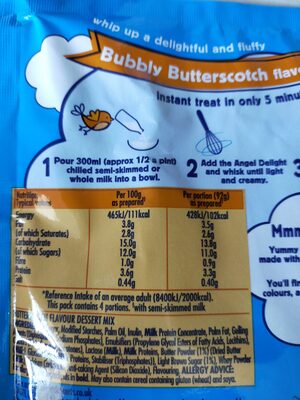Birds Angel Delight Butterscotch 59g
This product page is not complete. You can help to complete it by editing it and adding more data from the photos we have, or by taking more photos using the app for Android or iPhone/iPad. Thank you!
×
Barcode: 5000354770333 (EAN / EAN-13)
Common name: Angel Delight Butterscotch Flavour
Packaging: MixedPlasticFilm-packet
Brands: Angel Delight
Categories: Desserts, Puddings
Countries where sold: France, United Kingdom









